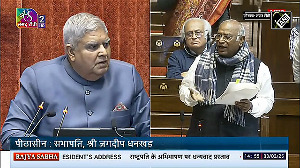 Earlier this week, a conversation about a ten-year old meditative film on the life of Dalai Lama brought a large number of New Yorkers to the Rubin Museum of Art. And as the gifted writer Pico Iyer (right) pointed out, most people in the audience were there not to see him, but to hear the words of the film's director Martin Scorsese, making a rare public appearance in the city where he calls home.
Earlier this week, a conversation about a ten-year old meditative film on the life of Dalai Lama brought a large number of New Yorkers to the Rubin Museum of Art. And as the gifted writer Pico Iyer (right) pointed out, most people in the audience were there not to see him, but to hear the words of the film's director Martin Scorsese, making a rare public appearance in the city where he calls home.
The discussion on Kundun (1977) coincided with the museum's current exhibition, The Missing Peace: Artists & the Dalai Lama. The show's companion catalogue carries essays by well-known writers and peace activists, including Arun Gandhi, Archbishop Desmond Tutu and Iyer -- who wrote a compelling piece about the urgency of bringing a solution to the Tibet issue.
Setting the tone for the evening was Tim McHenry, producer of the Rubin Museum, as he read from Iyer's piece.
"As the Dalai Lama travels through the United States, those who long to see him, to touch him, those who are eager to bask in his infectious optimism and warmth, must also try to help him in the place where he needs it most: urging China to change its policies before there is no Tibet to save," he quoted Iyer.
In introducing Scorese, Iyer described Kundun as one of seminal pieces of art and claimed he had watched it over and over again while he was working on a book on the 14th Dalai Lama.
"I was trying to understand this man in the context," he added.
Scorsese recalled working on the script of Kundun with Melissa Mathison (a Buddhist writer, who at that time was married to actor Harrison Ford and also wrote ET). Their vision, Scorsese said was to make a film where 'non-action is action.'
"It humbled us, in the very nature of how to tell the story," Scorsese said. The biggest challenge, Scorsese felt was on how to capture the texture, colors and faces of Tibetan Buddhists and their surroundings, while tracking the first 24 years in the life Tenzin Gyatso, the 14th Dalai Lama.
However, some people have complained that the film was too long, Scorsese said (the original cut was over three hours long. IMDB.com lists the film as two hour and 14 minutes long).
"Some Americans expected this to be a saga of the Dalai Lama, his escape to India and more," Scorsese said. "But we knew he made it to India, so we didn't go there," he added.
Iyer recalled a conversation he had with the Dalai Lama, some nine months before the release of the film. "I asked him what the saddest moment of his life was," Iyer said. "And he replied, crossing the border to India."
Iyer, meanwhile was also very keen to see how Scorsese would shoot the ending of the film -- the Dalai Lama's entry into India in 1959. "It could have been very literal, but you made it abstract," he said.
The film ends with scenes of the 24-year old Dalai Lama approaching a mountain pass heading towards India, but those shots are inter-cut with a Kalachakra ceremony
Kundun opened on December 25, 1997, the same day another big film, Titanic, hit the screens in North America. But Scorsese did not lose hope. The film eventually earned over $10 million worldwide and was dedicated to Scorsese's mother, who had passed away soon after the film was completed.
The Dalai Lama was very moved by the film, which was privately screened at the Film Society of Lincoln Center's Walter Reade theatre.
"I was a little hard on the Chinese," Scorsese quoted the Dalai Lama as saying. He also liked how the pictures were put together to make a film. The director had earlier shown the script to the Tibetan leader while he was a guest at Mathison and Ford's ranch in Jackson Hole, Wyoming.
On the current situation in Tibet, Scorsese said that he understood the frustration among the youth from the region and the violence. "But the Dalai Lama is an authority on non-violence," he said. "The real thing is that non-violence is a great revolution."
Although Scorsese was invited to the museum to talk about Kundun, it did not take long for the conversation to move to his latest film, The Departed, which finally won him the Oscar for best director.
Scorsese said the film was based on the strength of William Monahan's script. It took the director back to his childhood days when he grew up in the Little Italy section of Manhattan, where the residents were placed between the mob and the Church.
"I saw a lot of good people do bad things," Scorsese said. "I saw men who were pretty bad characters with a nasty way about them but who also went to church.
Text: Aseem Chhabra | Photograph: Jay Mandal






 © 2025
© 2025